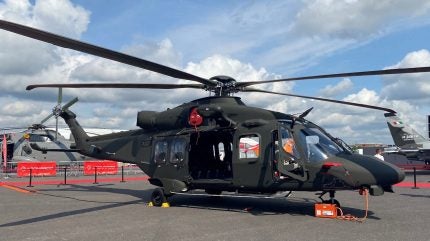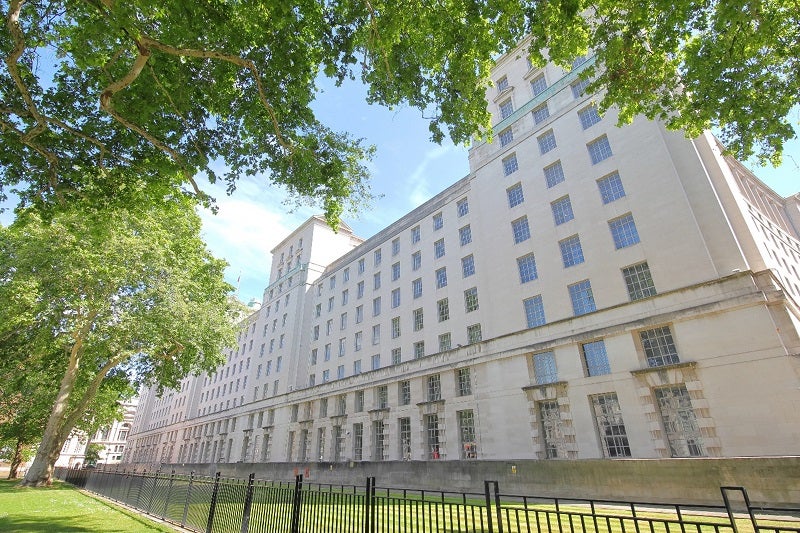
Britain’s commitment to Nato’s Next Generation Rotorcraft Capability (NGRC) programme may contend with its sovereign New Medium Helicopter (NMH) project.
A mix of interrelated factors – including Nato, the forthcoming Strategic Defence Review (SDR) and the UK’s lethargic fiscal policy – will come together to cast some doubt on the full procurement of both programmes.
NGRC and NMH respond to two different needs in scope and timing.
NGRC, under the management of the Nato Support and Procurement Agency (NSPA), aims to idenitify next generation technologies, capabilities and architectures being investigated by industry which could lead to initiatives for a medium helicopter solution only in the longer term.
France, Germany, Italy, the Netherlands and the UK are all participants, having signed a memorandum of understanding earlier this month to identify a single preferred solution by the end of 2027, ready to begin development from 2030.
Meanwhile, the UK’s NMH has always been intended to meet an urgent operational need to replace an ageing fleet of multi-role, medium-lift utility helicopters which are rapidly nearing their life-cycle limit.

US Tariffs are shifting - will you react or anticipate?
Don’t let policy changes catch you off guard. Stay proactive with real-time data and expert analysis.
By GlobalDataLeft with only a single tender in what was meant to be a competitive acquisition process, the NMH programme saw the exit of the Lockheed Martin UH-60 Black Hawk and Airbus H145 helicopters. Leonardo UK, with its AW149 design, is the only supplier left in the running according to the UK government on 8 October 2024.
British finances sink
The prospect of an either/or scenario stems from the considerable strain on Britain’s public finances. The country is facing a £22bn ($28.5bn) “black hole”. The government is committed to chipping away at the deficit through stringent cost-cutting measures that will doubtless impact UK defence priorities.
Cutbacks are already underway following reports that the Treasury have reached settlements with all government departments ahead Labour’s first budget at the end of October.
Even now, the new Labour government withstands pressure to commit to lifting defence spending to 2.5% of the UK’s gross domestic product, promising to raise it “as soon as possible.”

However, this is unlikely to be raised in the budget statement next week. Malcolm Chalmers, deputy director general at the British security policy think tank, the Royal United Services Institute, determined that “this additional resource, even if a firm timetable is agreed in the Budget this month, will not be enough to avoid hard choices, given the threats which the UK and its allies are likely to face in the coming years.”
Their refusal to raise defence spending to this level, even if achieved over the next few years – content to straddle the line of Nato’s 2% benchmark indefinitely – leaves the country unable to pursue two different medium-lift helicopter programmes at once.
NMH meets the UK’s urgent requirements
The Labour government will present its primary concerns in the SDR, due sometime in the first half of 2025, as the country enters a volatile security environment this decade. The military needs to be prepared for what is to come over the next few years – with some analysts suggesting the UK ought to be ready by 2028 to fight the Russians.
This would place importance on the NMH as the more timely programme. The deadline to submit a tender was in August this year, and the Ministry of Defence has already moved on to review whether Leonardo UK is able to meet the national requirements.
The Leonardo bid is promising considering the company is able to manufacture 60% of the AW149 helicopter in the UK at its Yeovil facility, and could address a global market for 500 medium-sized miltiary helicopters, “potentially worth billions in UK exports,” a Leonardo spokesperson told Airforce Technology.
Leonardo is positive, not just for its bid, but for programme progression. “The opportunity provided by having a sole bidder is that the acquisition can now be accelerated, saving time/costs and delivering this urgently-required capability into the hands of our armed forces as quickly as possible.”
After this, Ministers will then determine the feasibility of the acquisition in line with the UK’s strategic priorities which will be enshrined in the SDR next year.
Nato first means give, not take
In July, Nato awarded contracts to rotorcraft manufacturers Airbus, Leonardo and Sikorsky to carry out integrated platform concept studies – also known as ‘Study 5’. These studies – each comprising up to two concepts – will be delivered in October 2025, enabling the NSPA to prepare its report to the participants.
Declaring a “Nato first” defence strategy upon entering government for the first time after a decade and a half in the political wilderness, the Labour government will need to contribute British innovation to NSPA efforts for near-future medium helicopter technologies.
“If the focus is on ‘Nato First’, this suggests a prioritisation of the capabilities needed for short-notice defence of the homeland and Nato allies against Russia,” Chalmers maintained.
While the NMH fulfils the domestic requirement when it comes to filling a gap in the rotary capabilities in the UK Armed Forces, the government must also ensure its contributions to its ‘allies against Russia’ through the NGRC are strictly within its means.
Given the NGRC programme has only just begun – effectively this month – the UK should focus on what it can provide its partners, besides what it can take from them in this NSPA project. While the British defence industry is partly lacking in the rotorcraft sector, it can still contribute avionics among other things necessary to power a common Nato platform.
Meanwhile, US and European companies are already leading the charge when it comes to integrating emerging technologies into their early concept designs.
A spokesperson from Lockheed Martin, the parent group of Sikorsky, stated that they can derive from “years of investment and rigorous flight testing with multiple X2 technology demonstrators have proven its ability to change the future airspace.” This innovation provides twice the speed and twice the range of traditional helicopters, according to a company statement. “Our X2 aircraft will feature 1LMX efficiencies and 21st Century Security technology.”
Likewise, Bell Helicopters will support Leonardo in its bid for the NGRC having signed a deal to cooperate in the field of tilt-rotor technology in February. A Bell spokesperson commented “Bell and Leonardo share a multi-decade history of vertical lift technology collaboration.”


